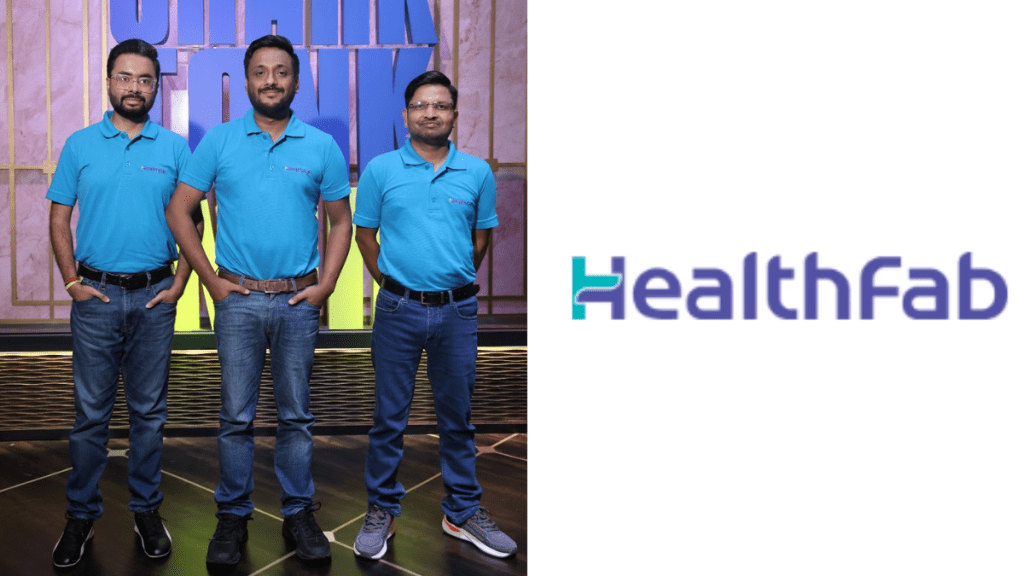For years, the menstrual hygiene market has been dominated by disposable sanitary pads and tampons. While sustainable alternatives like menstrual cups and cloth pads have gained traction, they remain niche. Healthfab, a startup founded by Kiriti Acharjee, is betting on period underwear as the next big shift in feminine hygiene. But can a product that demands behavioural change really challenge an industry worth billions?
From what is understood, the startup has raised $1 million in a pre-Series A round led by Mistry Ventures, with participation from BeyondSeed, Thrive Ventures, and investors Anupam Mittal, Aman Gupta, Vineeta Singh, and Peyush Bansal. Founded in 2019, Healthfab offers the GoPadFree Period Panty, a reusable and leak-proof alternative. The company claims to have over 3 lakh customers and an annual revenue growth rate of 2.5-3x, with plans to expand across metro and Tier II cities while investing in R&D. Their products are available on their official website and major platforms like Amazon, Flipkart, Myntra, and Zepto. Healthfab’s total revenue grew from Rs 3.3 crore in FY23 to Rs 8.4 crore in FY24, while it turned profitable with Rs 2.03 lakh in FY24 after a loss of Rs 1.32 crore in the previous year, according to data accessed by Tofler.
Healthfab on Shark Tank India
Healthfab’s appearance on Shark Tank India undoubtedly provided valuable exposure, but it’s worth questioning how much of the show’s fame translates into long-term business success. “Our journey on Shark Tank India was an incredible experience,” Acharjee told BrandWagon Online, reflecting on the increased visibility. However, while the platform brought the brand national attention, there’s still the lingering question of whether the brand can maintain that momentum. Healthfab’s experience shows that the feedback from the Sharks helped refine their strategy, but the real challenge lies in converting this newfound interest into sustained growth.
Seeking Rs 1 crore for 3% equity for their reusable period panties. The sharks raised concerns about the product’s aesthetics and market competition, with Peyush Bansal pointing out that similar products already exist. The founders argued their design was superior due to its cotton fabric, unlike polyester alternatives from global brands. Namita Thapar suggested expanding into urinary incontinence solutions, to which the pitchers confirmed they were working on a new SKU. After negotiations, Anupam Mittal, Aman Gupta, Vineeta Singh, and Peyush Bansal offered Rs 2 crore for 7% equity, which the founders accepted.
Identifying a gap: From research to product development
Healthfab’s focus on reusable period underwear was born out of a perceived gap in the market, driven by concerns over the environmental impact and the long-term costs of disposable pads. “We noticed that most women still relied on disposable pads, despite growing concerns around sustainability, comfort, and long-term costs,” Acharjee explained. However, while the idea of reducing environmental waste is compelling, the broader market’s readiness to embrace reusable alternatives remains a question mark. Many women are still hesitant about switching to reusable products due to factors like hygiene concerns, comfort, and accessibility. Despite the growing interest in eco-friendly solutions, it remains unclear whether a significant portion of the market will adopt reusable underwear as a mainstream product.
Statista reports the global menstrual hygiene market is set to grow by a CAGR of 4.83% till 2029 with a generated revenue of $52.31 billion in 2025, driven in part by rising environmental awareness. However, a shift from traditional sanitary products to more sustainable options, like Healthfab’s, will likely be gradual, with education and trust-building critical to success.
Manufacturing and scaling: Plans for growth
Healthfab’s in-house production offers quality control, but scaling from 40,000 to 100,000 units monthly won’t be easy. “In-house manufacturing keeps costs low and quality high,” Acharjee said. However, automation and efficiency upgrades are crucial—can they scale without sacrificing quality or affordability?
Pricing strategy: Accessibility meets sustainability
Healthfab positions its pricing as an affordable alternative to disposable sanitary products, aiming to offer a three-pack between Rs 499–599. “We initially priced it at Rs 999 for three but aim to lower costs,” Acharjee said. While competitive, it remains to be seen if this pricing can attract a broad customer base while maintaining profitability. With India’s feminine hygiene market projected to reach $6.83 billion by 2025 (Statista), the challenge lies in balancing affordability with sustainable growth.
Raising awareness: A marketing approach focused on education
Perhaps the biggest hurdle for Healthfab lies in educating consumers about the benefits of reusable menstrual products. “Since reusable period products require a behavioural shift, education is a key part of our marketing strategy,” Acharjee explained. However, this educational effort will require a sustained, long-term commitment. The market is not just about creating awareness but also addressing deep-seated hesitations around hygiene, comfort, and the overall efficacy of reusable alternatives. The task of shifting consumer behaviour from disposable pads to reusable products is no small feat.
Healthfab may be trying to clean up the planet, but the real question is: can it also clean up in a market that’s stuck in its old, disposable ways?
